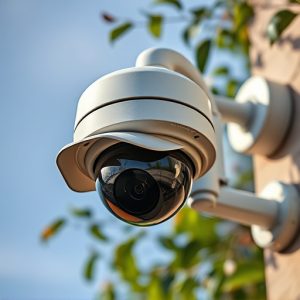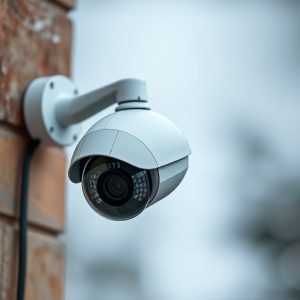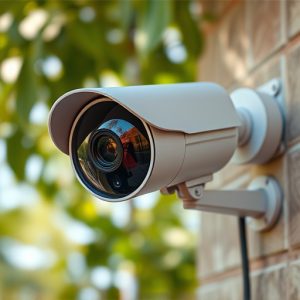Realistic Security Camera Shells: Design & Testing for Authenticity
The strategic placement of fake security cameras, at unusual heights, is a deterrent for thieves and…….
The strategic placement of fake security cameras, at unusual heights, is a deterrent for thieves and vandals. Manufacturers must consider real mounting heights, common eye levels, and typical approach perspectives to create authentic-looking decoys. By using high-quality materials and iterative testing, they can design realistic shells that mimic genuine hardware, including precise dimensions, shape, and subtle design details, all while focusing on the critical aspect of Fake Security Camera Height Placement for immersive effect.
In today’s digital era, security cameras have become ubiquitous, yet malicious actors often exploit fake camera placements to compromise security. This article delves into the art of designing realistic security camera shells, addressing critical aspects like height placement and overall aesthetics. We explore common strategies used to disguise fake cameras and provide an in-depth guide on key design considerations. Through iterative testing, we demonstrate how achieving authenticity can significantly enhance overall security measures, particularly regarding Fake Security Camera Height Placement.
- Understanding Fake Security Camera Placement Strategies
- Key Design Considerations for Realistic Shells
- Testing and Iteration: Achieving Authenticity
Understanding Fake Security Camera Placement Strategies
Many criminals and security researchers have studied fake security camera placement strategies, revealing a common tactic used by both good actors to confuse potential thieves and bad actors intending to disable or tamper with surveillance equipment. One key aspect of this strategy is the fake security camera height placement. Often, these dummy cameras are placed at unusual heights—too high or too low—to mimic real surveillance equipment but deter closer inspection. This method can be effective in deterring casual vandals, as they might assume that any camera not positioned within their immediate reach is either non-functional or part of a sophisticated security system.
However, understanding these placement tricks is also crucial for designing realistic security camera shells. By knowing how and where fake cameras are likely to be positioned, manufacturers can create more convincing decoys. This involves considering factors like common eye levels, the typical mounting heights of real surveillance equipment, and even the perspective from which most people approach a building. Incorporating these insights into the design ensures that the security camera shell not only looks authentic but also functions as an effective deterrent against theft or tampering in various scenarios.
Key Design Considerations for Realistic Shells
When designing realistic security camera shells, attention to detail is paramount. Key considerations revolve around mimicking genuine hardware both visually and in terms of placement. This includes accurately replicating the dimensions and shape of real cameras, right down to subtle design nuances often overlooked but crucial for authenticity. The Fake Security Camera Height Placement is a critical aspect; situating the ‘camera’ at realistic angles and heights adds to the illusion, preventing a design that appears staged or artificial.
Furthermore, materials play a significant role in achieving verisimilitude. Using high-quality, weatherproof plastics and finishes ensures the shell not only looks real but also stands up to outdoor conditions, mirroring the durability of actual security cameras. The goal is to create an immersive environment where potential thieves or vandals are fooled into thinking they’re dealing with genuine surveillance equipment, thereby deterring malicious actions.
Testing and Iteration: Achieving Authenticity
In the pursuit of a realistic security camera shell design, testing and iteration play a pivotal role in achieving authenticity. The process begins with meticulous research on various factors that contribute to a camera’s visual appearance and behavior in real-world settings. This includes studying the dimensions, shapes, and mounting heights of genuine security cameras. For instance, the Fake Security Camera Height Placement is a critical aspect; getting it right ensures the replica accurately mimics the behavior of its functional counterpart.
By simulating different environments and conditions, designers can refine the shell’s design iteratively. This involves testing under various lighting conditions, angles, and distances to ensure the camera looks lifelike from every perspective. The use of advanced materials and manufacturing techniques further enhances realism, accounting for subtle details like texture and reflection that would be present on a real camera. Through continuous testing and refinement, the security camera shell design attains an authentic appearance and functionality.
In conclusion, creating realistic security camera shell designs involves a careful balance of understanding fake placement strategies, considering key design elements, and undergoing rigorous testing. By addressing these aspects, professionals can craft shells that not only fool the untrained eye but also serve their intended security purposes. Optimizing Fake Security Camera Height Placement is just one part of this process, ensuring authentic appearance and functionality for enhanced surveillance effectiveness.


